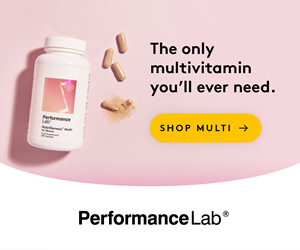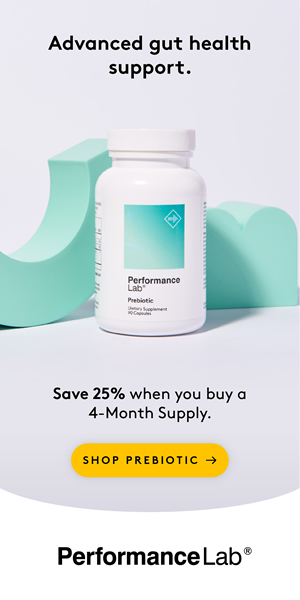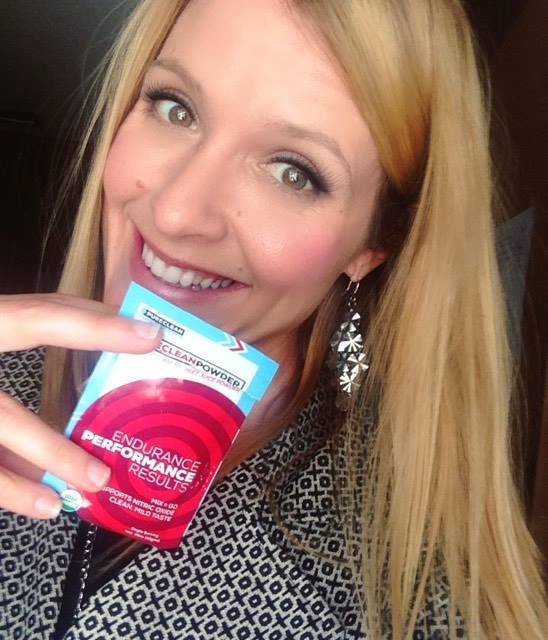
8 Incredible Vitamins To Stop Joint Pain
If you’ve been dealing with stiff and achy joints and want to feel better and more active, you’re in the right place.
Today, we’ll introduce you to these special vitamins and explain how they work to keep your joints healthy.
Before we get into vitamins, let’s talk about why joints can hurt. Joint pain can happen for many reasons, like arthritis, swelling, injuries, or just getting older.
Surprisingly, people with high blood sugar are more likely to have joint problems. That’s because high blood sugar can cause swelling and harm your joints.
Research has also shown that if you have diabetes, you might have specific joint issues. So, it’s essential to take action early to keep your joints healthy.
These vitamins we’re going to talk about can help ease joint pain and make your joints work better.
Now, let’s jump into these 8 vitamins that can help you stop joint pain. Ready? Let’s begin!
Number 8 on our list is Vitamin K.
Vitamin K is an important nutrient that does two big jobs in our bodies.
First, it helps our blood to clot when we get a cut or injury. Second, it helps keep our bones strong by helping control calcium.
Now, recent research has shown that vitamin K is like a secret weapon for our joints.
Scientists at Tufts University found out that vitamin K teams up with vitamin D to stop joint cartilage from getting hard, which is a big problem in conditions like osteoarthritis.
When your joint cartilage gets hard, it can cause a lot of pain and make it hard to move.
Vitamin K activates something called matrix-Gla protein, and this protein keeps your joints from getting hard.
This is really good news, especially if you already have arthritis.
You can find vitamin K in green leafy veggies like spinach, kale, and mustard greens.
It’s also in some other veggies like asparagus, avocado, and blueberries.
But here’s something important: if you take medicine to thin your blood or if you have kidney problems, you should talk to your doctor before adding a lot of vitamin K to your diet.
Next up is vitamin D, and it’s often called the “Sunshine Vitamin.”
Most people know it’s essential for keeping our bones strong, but it also plays a crucial role in fighting joint pain.
Here’s how it works: vitamin D helps control our immune system, and that’s a big deal because it can calm down inflammation and ease joint pain.
Now, while there isn’t a mountain of research on vitamin D and joints, the studies we do have look pretty promising.
For example, a study from 2013 found that those with low vitamin D were more likely to have knee pain get worse over time.
So, it seems that fixing a vitamin D shortage might slow down how fast your joints wear out.
Now, if you have fibromyalgia, you might be interested in this: when they fixed vitamin D levels in some studies, people felt less pain and had a better quality of life.
One study from 2015 even found that boosting vitamin D made the inflammation and pain-related stuff in your blood go down.
And for people with diabetes, keeping vitamin D levels where they should be is extra important.
See, low vitamin D is linked to insulin resistance, which isn’t good.
So, how do you get enough vitamin D? Well, you can soak up some from the sun, and it’s also in foods like salmon, tuna, eggs, and fortified milk and yogurt.
But getting outside for a bit of sun is a pretty natural way to keep your vitamin D levels up.
Moving on to our countdown is number 6. Vitamin A.
Let’s talk about vitamin A. You know, that nutrient that’s kind of like the superhero for your cartilage – the cushiony stuff that keeps your joints comfy when you move.
Now, vitamin A is like a family of nutrients, and one of the famous members is beta-carotene. It’s the thing that gives carrots that bright orange color you can’t miss.
But if you’re into the most potent form of vitamin A, that’s retinol
So, here’s the deal: research shows that when you keep your vitamin A levels in the healthy zone, it can help calm down inflammation and oxidative stress in your body.
And that’s essential because those two troublemakers can mess up your cartilage.
But it’s not just about your joints; vitamin A has its fingers in lots of pies.
It helps you see well, keeps your immune system in tip-top shape, and even gives your skin that healthy glow.
Now, before you start loading up on vitamin A, a word of caution: too much of it is bad. So, balance is key.
You can find vitamin A in loads of different foods.
Sweet potatoes, carrots, leafy greens, turnips, mango, papaya, apricots, seafood, eggs, cheese, and meat are all packed with vitamin A.
Okay, let’s dive into vitamin C, the fifth item on our list.
You might know it as the thing that boosts your immune system, but it’s also a rock star when it comes to keeping your joints happy.
Here’s the deal: vitamin C is like the builder of the joint world.
It’s responsible for making collagen, which, as you already know, is a super important protein found in your connective tissues.
As we get older, our bodies start to slow down on making collagen, which makes our joints more prone to wear and tear.
But by loading up on vitamin C from fruits and veggies, you’re giving your joints some love and potentially preventing future joint issues.
Collagen is like the support system for your joints; it gives them strength and flexibility and, overall, keeps them in shape.
Now, you’ve probably heard about collagen for your skin, but it’s not just for looks.
Inside your body, collagen plays a similar superhero role. When it comes to your joints, collagen is crucial.
Now, studies have shown that having enough vitamin C can be a game-changer if you’ve got joint issues like osteoarthritis, which is all about your cartilage breaking down and causing constant joint pain.
People who increased their vitamin C intake reported feeling less pain and used fewer painkillers after a few months.
It’s like a natural way to fight joint pain and reduce your reliance on meds, which often come with a bunch of side effects.
Alright, let’s dive into vitamin E, the fourth item on our countdown.
It’s like the defender of your cells, and it’s not just about joints; it’s about your whole body.
Vitamin E is an antioxidant, and its job is to keep your cells healthy and fend off oxidative stress, which is linked to lots of health issues like arthritis, heart problems, and even cancer.
Now, when it comes to joints, oxidative stress is like the villain.
It causes inflammation in your joints, which makes them hurt and can speed up their wear and tear.
But here’s where vitamin E steps in—it’s the hero that can help reduce inflammation in your joint tissues, making things less painful and promoting overall joint health.
Vitamin E isn’t just about your joints; it’s like an all-around health champion.
It’s been found to improve how your body uses insulin and controls blood sugar, which is super important, especially if you’re dealing with diabetes or prediabetes.
One study found that vitamin E made people’s bodies more sensitive to insulin, and another study showed it helped control blood sugar in people with type 2 diabetes.
Now, some studies have given vitamin E supplements a bad rap, especially if you’re at risk for bleeding disorders.
But here’s the good news – you can get all the vitamin E you need from food, which is the safer route and comes with a bunch of other nutrients your body loves.
So, where do you find this vitamin E powerhouse?
Think nuts and seeds like almonds, sunflower seeds, and hazelnuts.
Avocados, spinach, and leafy greens are also fantastic sources.
These foods not only give you vitamin E but also loads of other nutrients, healthy fats, and fiber, which is like a bonus for your health.
Alright, moving on to number 3. Let’s talk about omega-3 fatty acids.
They’re not exactly vitamins, but they’re like the unsung heroes of joint health.
Picture them as the inflammation-fighting champions.
Omega-3s, these healthy fats—are fantastic at reducing joint pain and stiffness.
They’re like the go-to team in your joint health playbook.
Loads of studies have shown how omega-3s can be total game-changers for joint health and taming inflammation.
A study published in the Lancet journal looked at folks with rheumatoid arthritis.
When they switched to a diet rich in omega-3s, magic happened—their symptoms got way better.
There are other studies that back this up too.
Omega-3s have been found to ease joint pain and swelling, lower the levels of inflammation-causing particles in your body, and even reduce the need for pain meds.
But here’s the cool part – omega-3s aren’t just about joints.
They can make your body more sensitive to insulin, which is awesome, especially if you’re dealing with diabetes.
They lower the risk of heart disease, stroke, and eye problems, and they’re like brain food—great for your noggin.
Now, where do you find these amazing omega-3s?
Well, fatty fish like salmon, mackerel, and sardines are top picks.
But if you’re not a fan of fish, no worries—you can get omega-3s from plant sources too.
Things like flaxseeds, chia seeds, and walnuts are packed with them.
Just remember, walnuts can be munched on as is, chia seeds are best soaked in water overnight, and flaxseeds should be ground because your body has a tough time digesting them whole.
Number 2 on our countdown is Niacin, also known as Vitamin B3.
Remember how collagen is super important for your cartilage, tendons, and ligaments?
Well, niacin is like the director in the production of collagen.
These tissues rely on collagen to keep their structure and stretchiness just right, which, of course, is crucial for your joints to work smoothly.
But niacin isn’t just about making collagen. It’s also an anti-inflammatory agent.
This means it can help dial down the pain and swelling in your joints, making it a pretty nifty natural remedy, especially for those with joint issues like osteoarthritis.
Niacin is also great for heart health. It helps with your cholesterol levels and keeps your blood vessels happy and healthy.
Now, you can find niacin in lots of foods, like chicken, turkey, tuna, salmon, mushrooms, peanuts, and whole grains.
But here’s the thing – it might be a bit tough to get enough niacin from food alone, especially if you’ve got joint issues or risk factors for heart problems.
In that case, talking to a healthcare professional about adding a niacin supplement to your routine could be a smart move.
Last but not least is number 1: B vitamins.
Now, when it comes to joint pain, two members of the B vitamin family take the spotlight: B6 and B12.
First up, we’ve got B6, also known as pyridoxine.
This vitamin has some serious anti-inflammatory powers.
It can help dial down joint pain and keep things comfortable.
But that’s not all—B6 also steps up to prevent nerve damage, which can be a real concern for those dealing with diabetes.
Now, let’s talk about B12, also called cobalamin.
Nerve pain can often team up with joint pain, making things doubly uncomfortable.
But don’t worry, B12’s got your back—it helps maintain your nervous system’s health, ensuring your nerves are doing their job right.
You might be wondering, Where can you find these B vitamins?
Well, they’re scattered throughout lots of delicious foods.
For B6, think about adding chicken, turkey, salmon, chickpeas, bananas, papaya, oranges, and dark leafy greens to your plate.
These foods are like nutrient powerhouses.
And for B12, it’s all about animal products like meat, fish, dairy, and eggs.
But if you’re into plant-based alternatives, you’re in luck.
Look for fortified options like soy milk, nutritional yeast, or cereal.
And hey, even some plant-based sources like shiitake mushrooms, nori, and nutritional yeast can give you a little B12 boost.
And there you have it, folks—the top 8 vitamins to bid farewell to joint pain!
By making sure we’re loading up on these essential nutrients, we’re not only protecting our joints but also dialing down inflammation and paving the way for a life free from pain.
We hope this video has brought you plenty of useful insights.
If you’ve got any questions, comments, or fantastic tips to share with the community, please drop them in the comments section below.
Thanks for tuning in, and here’s to a day filled with health and happiness!









